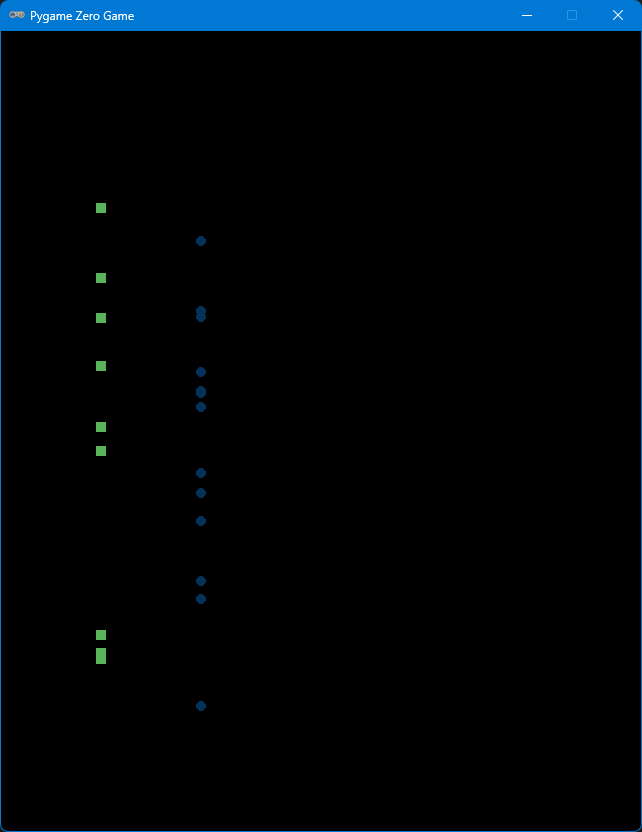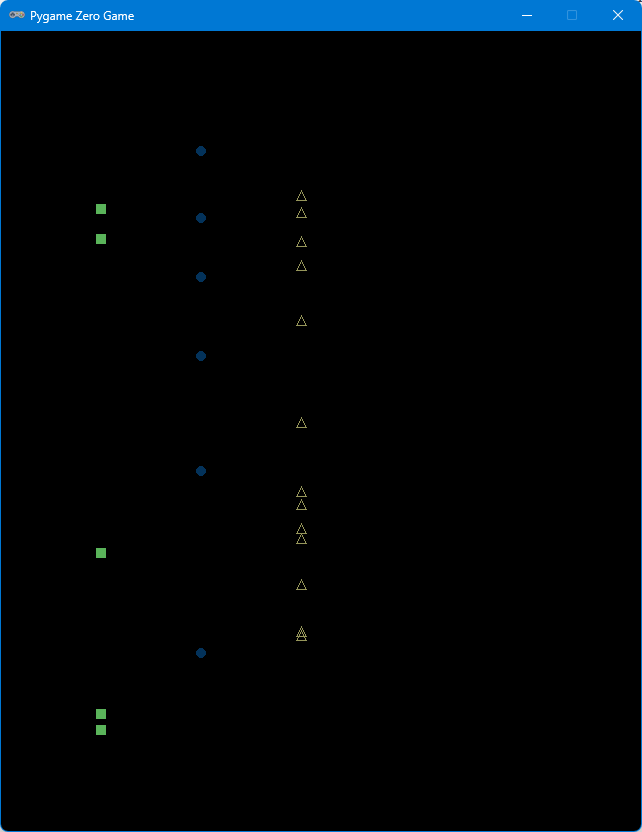Classes and inheritance
This short sub-section introduces the Python concepts of classes and inheritance. Once you have completed this sub-section, you can read more about classes and inheritance from the following online materials:
Common behaviour
In Smash, eight classes were created to represent the different game objects:
PaddleBallBlockParticleScoreParticleExplosionBonusLivesBonusPaddleBonusSpeed
When writing the code for those classes, did you notice how similar the classes were?
The following properties and methods are present in many of the classes:
draw()update()bounding_boxpositionalive
This is because each of the classes represent game objects and the game itself
expects each game object to have certain behaviour, such as being able to draw()
itself. In Smash, we implemented the expected behaviour in each of
the classes separately. Wouldn't it be great if there was a handy way to share
that functionality so we only needed to implement it once? There is: inheritance.
But before we get to that, we are going to start with a simple demonstration program
that has objects from 2 types of class.
Demonstration program
Copy the following code into a PyGame Zero project in Replit which will randomly
place Squares or Circles at the top of the screen allowing them to fall down
to the bottom for some seconds.
from random import randint
from pgzero.rect import Rect
from pgzero.screen import Screen
WIDTH = 640
HEIGHT = 800
GRAVITY = 120
screen: Screen
game_objects = []
def draw():
screen.fill((0, 0, 0))
for game_object in game_objects:
game_object.draw(screen.draw)
def update(dt):
global game_objects
choice = randint(1, 30)
if choice == 1:
box = Square(100, 100, 10)
game_objects.append(box)
elif choice == 2:
circle = Circle(200, 100, 5)
game_objects.append(circle)
for game_object in game_objects:
game_object.update(dt)
game_objects = [game_object for game_object in game_objects if game_object.alive]
class Square:
def __init__(self, x, y, width):
self.x = x
self.y = y
self.lifetime = 5
self.colour = (90, 180, 90)
self.width = width
@property
def alive(self):
return self.lifetime > 0
def update(self, dt):
self.lifetime -= dt
self.y += GRAVITY * dt
def draw(self, draw):
half_width = self.width / 2
rect = Rect(self.x - half_width, self.y - half_width, self.width, self.width)
draw.filled_rect(rect, self.colour)
class Circle:
def __init__(self, x, y, radius):
self.x = x
self.y = y
self.lifetime = 5
self.colour = (3, 50, 90)
self.radius = radius
@property
def alive(self):
return self.lifetime > 0
def update(self, dt):
self.lifetime -= dt
self.y += GRAVITY * dt
def draw(self, draw):
draw.filled_circle((self.x, self.y), self.radius, self.colour)
import pgzrun
pgzrun.go()
When you run the code, you will be rewarded with two streams of shapes falling down the
screen as in the image below. Notice how the code for the Square and Circle is almost
exactly the same, with differences in only the __init__() and draw() methods. What if
we also want to add in triangles and rectangles to our demo? Would we really need to
duplicate all that code another two times?

A common ancestor
From the previous code, lets make a new class called Shape that has all of the code that
is common between Square and Circle. It will look like the code below. Note that there
is no update() method and the __init__() method only sets x, y and lifetime:
class Shape:
def __init__(self, x, y):
self.x = x
self.y = y
self.lifetime = 5
@property
def alive(self):
return self.lifetime > 0
def update(self, dt):
self.lifetime -= dt
self.y += GRAVITY * dt
We can now adapt our original classes to inherit the functionality of Shape. This is done
by copying in the code for the Shape class before the Square and Circle shapes, then changing the class Square: to class Square(Shape): as shown below:
class Square(Shape):
def __init__(self, x, y, width):
self.x = x
self.y = y
self.lifetime = 5
self.colour = (90, 180, 90)
self.width = width
@property
def alive(self):
return self.lifetime > 0
def update(self, dt):
self.lifetime -= dt
self.y += GRAVITY * dt
def draw(self, draw):
half_width = self.width / 2
rect = Rect(self.x - half_width, self.y - half_width, self.width, self.width)
draw.filled_rect(rect, self.colour)
Do the same for the Circle class and run your program to make sure it works. If you get stuck,
the full code up to this point is here.
Using the common ancestor
Both Square and Circle descend from Shape but still contain the duplicated code. The
code that in the Shape class can be removed from Square and Circle. The duplicated
code that can be removed is the alive property, the update method and the x, y and
lifetime variables in the __init__() method. The modified Square class is shown below:
class Square(Shape):
def __init__(self, x, y, width):
self.colour = (90, 180, 90)
self.width = width
def draw(self, draw):
half_width = self.width / 2
rect = Rect(self.x - half_width, self.y - half_width, self.width, self.width)
draw.filled_rect(rect, self.colour)
Do the same for the Circle class. If you get stuck, the full code up to this point is
here.
Run your program now. What happens? Do you get a scary looking error that ends with
AttributeError: 'Square' object has no attribute 'lifetime'?
Calling the parent
The error message that you saw in the previous step provides a hint as to what has gone
wrong: the lifetime variable does not exist in your class. So why is this? Your Square
and Circle classes inherit from the Shape class. The x, y and lifetime variables
are added to your classes in __init__() method of the Shape class. However, because
your classes provide __init__() methods of their own, the Shape __init__() method
is not used. This is called overriding and you can read more about it in the links provided
at the top of the page.
So what do we do about it in our code? We call the __init__() method of the Shape class
from our own classes. This is done by adding super().__init__(x, y) to the start of the
__init__() method of the Square and Circle classes. This is shown below for the
Square class.
def __init__(self, x, y, width):
super().__init__(x, y)
self.colour = (90, 180, 90)
self.width = width
Make the same change for the Circle class. If you get stuck, the full code up to this point
is here.
Adding a Triangle
Now we are going to extend our code to draw triangles too. Our triangle will have three
points, each defined by a single size parameter:
- 1 north of
(x, y). - 1 south east of
(x, y). - 1 south west of
(x, y).
Because we can make another subclass of Shape, we can follow the same pattern as the
Square and Circle classes. Add the following code immediately below the Square and
Circle classes:
class Triangle(Shape):
def __init__(self, x, y, size):
super().__init__(x, y)
self.colour = (150, 150, 90)
self.size = size
def draw(self, draw):
top = (self.x, self.y - self.size)
east = (self.x - self.size, self.y + self.size)
west = (self.x + self.size, self.y + self.size)
draw.line(top, east, self.colour)
draw.line(top, west, self.colour)
draw.line(east, west, self.colour)
If you run your game, no Triangle shapes will be displayed. This is because we have not
yet created any to display. The update() function is where we create these shapes. Add
the following code to the update () function after the code that creates the Circle
shapes. Run your program, it should look similar to the screen shot below. If you have any
difficulty, the full code can be found here.
elif choice == 3:
triangle = Triangle(300, 100, 5)
game_objects.append(triangle)

Experiment
Now try adding a Rectangle shape to your demonstration?
What other shapes can you think of adding?